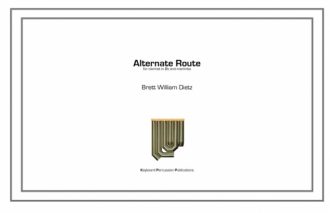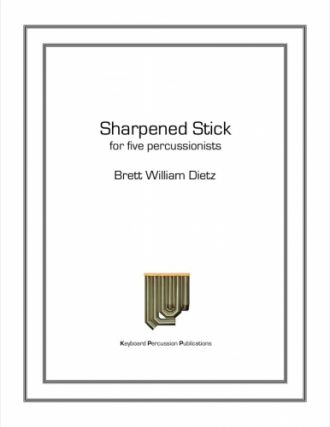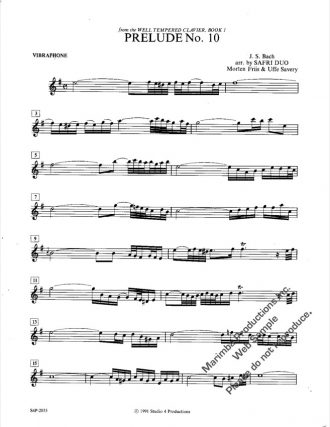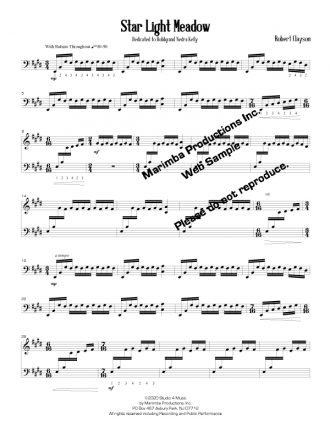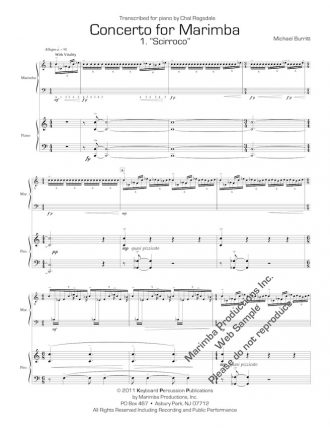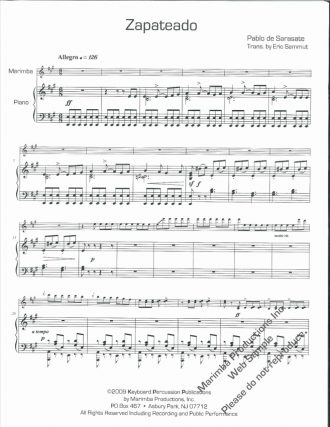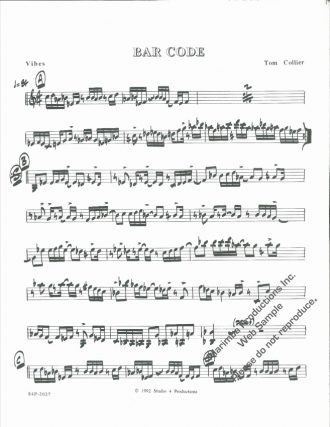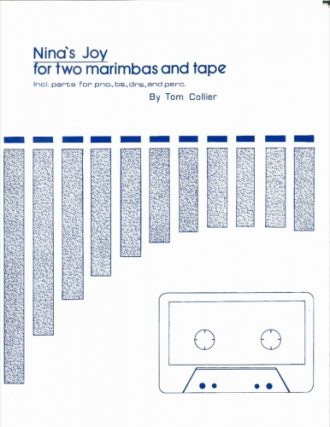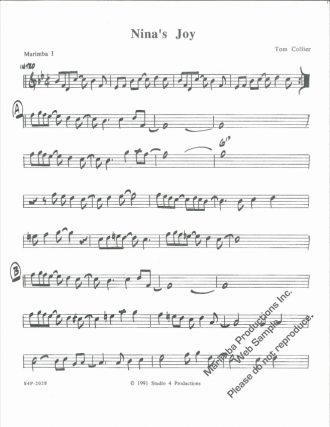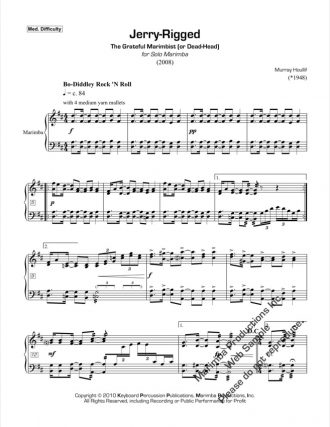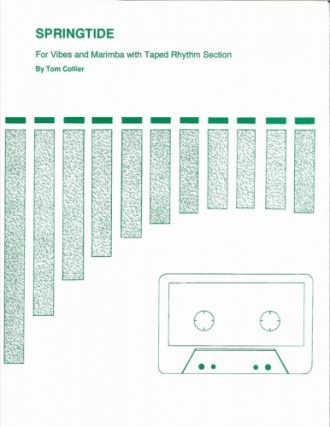In this new work for solo vibraphone and Chinese opera gong, rhythmic structure is a driving force. Three basic themes are used, each with its own tempo and rhythmic motives.
The first uses an arpeggiated grace-note figure that leads to a repeated-note motive with a gradual diminuendo. The second motive is rhythmically disjunctive, using double stops and lateral strokes that move obliquely between the hands. The third motive is a sixteenth-note passage that begins in the tempo of the original theme and accelerates to a much faster tempo.
The work is sculpted by alternating, combining, fragmenting and varying the material from these motives. The performer must become completely confident with the three contrasting tempi in order to effectively bring out themes.
The opera gong makes five appearances scattered about the piece, each only a single note marked ffffff. Although there are ample technical challenges, the accomplished vibraphonist will find that giving a cohesive rendering of “Apranibita” is the greatest challenge.
— Scott Herring, Percussive Notes — December 2007
$15.00
Apranibita
“Although there are ample technical challenges, the accomplished vibraphonist will find that giving a cohesive rendering of “Apranibita” is the greatest challenge.”- Percussive Notes
Sharpened Stick
$40.00 – $44.00The Sharpend Stick is a Native American war song and dance that is in the “fish-step” style. It is said that the popular 1920’s dance craze the “Charleston” was derived from this dance.
The Sharpend Stick is a Native American war song and dance that is in the “fish-step” style. It is said that the popular 1920’s dance craze the “Charleston” was derived from this dance.
Fire Wire
$25.00A third-place winner in 2002 PAS composition contest for solo multiple percussion. The title is taken from the new form of USB, a high data-transfer cable which is the interface for today’s digital audio and video devices (allowing the user to send more than a CD’s worth of data every 10 seconds). In the piece, the performer becomes the Fire Wire, relaying information to the audience at a high rate of speed.
A third-place winner in 2002 PAS composition contest for solo multiple percussion. The title is taken from the new form of USB, a high data-transfer cable which is the interface for today’s digital audio and video devices (allowing the user to send more than a CD’s worth of data every 10 seconds). In the piece, the performer becomes the Fire Wire, relaying information to the audience at a high rate of speed.
Uneven Surfaces
$50.00Solo timpani (5 drums) and 4 percussionists – vibraphone/bass drum/opera gong, marimba (5.0)/field drum, 2 congas/2 cowbells/tom-tom/sus. cym./glockenspiel. 2 bongos/2woodblocks/closed hi-hat/ribbon crasher/kickdrum/crotales. Premiered at PASIC 2004 by the Victoria Memorial Percussion Ensemble (for whom the piece was written) with John Beck playing the solo timpani part.
Solo timpani (5 drums) and 4 percussionists – vibraphone/bass drum/opera gong, marimba (5.0)/field drum, 2 congas/2 cowbells/tom-tom/sus. cym./glockenspiel. 2 bongos/2woodblocks/closed hi-hat/ribbon crasher/kickdrum/crotales. Premiered at PASIC 2004 by the Victoria Memorial Percussion Ensemble (for whom the piece was written) with John Beck playing the solo timpani part.
Rechargeable Light
$50.00 – $55.00Rechargeble Light received its premiere performance on August 4, 2000 at the Chautauqua Institute (Chautauqua, NY) with Michael Burritt as percussion soloist. It attempts to fuse electronic and acoustic sounds in a chamber music setting. Scored for percussion soloist playing non-pitched instruments accompanied by five percussionists playing mostly pitched instruments including two synthesizers and a MalletKat (a synthesizer comprised of triggers in the shape of a mallet keyboard).
Rechargeble Light received its premiere performance on August 4, 2000 at the Chautauqua Institute (Chautauqua, NY) with Michael Burritt as percussion soloist. It attempts to fuse electronic and acoustic sounds in a chamber music setting. Scored for percussion soloist playing non-pitched instruments accompanied by five percussionists playing mostly pitched instruments including two synthesizers and a MalletKat (a synthesizer comprised of triggers in the shape of a mallet keyboard).
Nocturne
$25.00Nocturne is a 15 minute work for solo percussionist. The piece is multi-metric and draws its material through rhythmic
permutations of the main theme. The chimes are used to play “serial” melodies based on the southern hymn “My Song in
the Night.
Nocturne is a 15 minute work for solo percussionist. The piece is multi-metric and draws its material through rhythmic
permutations of the main theme. The chimes are used to play “serial” melodies based on the southern hymn “My Song in
the Night.
| Difficulty | Advanced |
|---|---|
| Performance Type | Solo |
Related products
24 Etudes for Marimba
$18.00 – $20.00This outstanding etude book emphasizes the equalization of the two hands via musically interesting compositions.
This outstanding etude book emphasizes the equalization of the two hands via musically interesting compositions.
Star Light Meadow
$12.00 – $13.00An intermediate solo marimba piece, reminiscent of a summer sunset in the country.
An intermediate solo marimba piece, reminiscent of a summer sunset in the country.
Concerto for Marimba w/piano reduction
$56.00 – $62.00Zapateado
$17.00 – $20.00Bar Code
$19.50 – $21.00Four-Mallet Progressive Literature
$24.00 – $28.00A companion to Four-Mallet Method for Marimba; 45 solos that focus on double vertical strokes, single alternating strokes, rolls, and single independent strokes.
A companion to Four-Mallet Method for Marimba; 45 solos that focus on double vertical strokes, single alternating strokes, rolls, and single independent strokes.
Spanish Dance (Playera) (Granados/arr. Ron Fink)
$12.00 – $13.00Arranged for marimba quartet
Arranged for marimba quartet
Nina’s Joy
$19.50 – $21.00Jerry-Rigged
$8.00A 4.3 marimba solo inspired by the Grateful Dead.
A 4.3 marimba solo inspired by the Grateful Dead.
Charleston Capers (G.H. Green/arr. Bob Becker)
$20.00 – $22.00The arrangement Bob Becker made for NEXUS which has caught the attention of audiences and percussionists around the world and created a whole new fascination with the xylophone as a solo instrument. The accompaniments require four players performing on a minimum of two marimbas.
The arrangement Bob Becker made for NEXUS which has caught the attention of audiences and percussionists around the world and created a whole new fascination with the xylophone as a solo instrument. The accompaniments require four players performing on a minimum of two marimbas.





